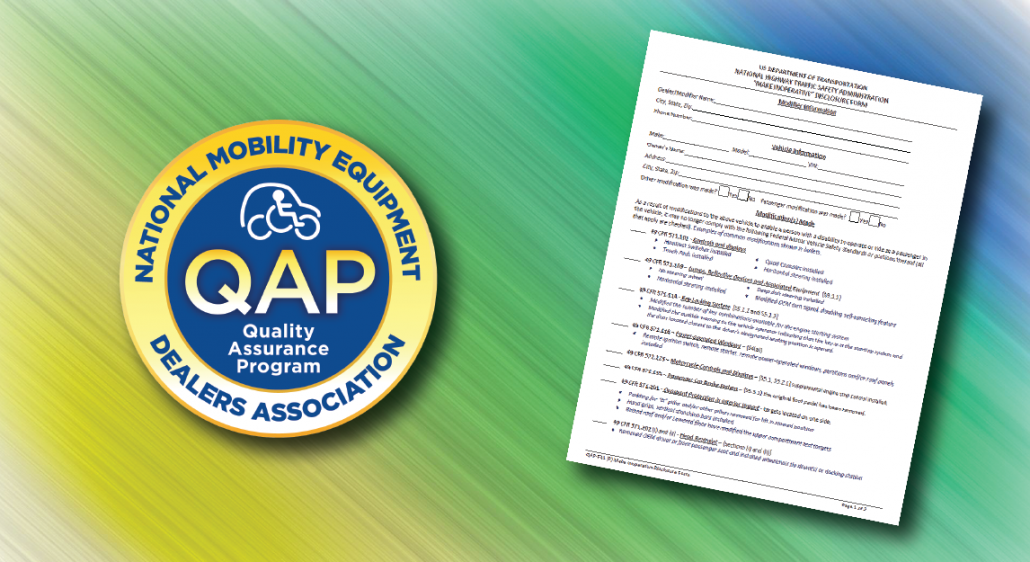Here is a breakdown of when we expect you will use the new exemptions:
- The FMVSS 111 exemption applies when you obstruct, or partially obstruct, the rear camera view. Installing a hitch mounted lift, trailered lift, or any mobility equipment installed to the rear of the vehicle you will use the FMVSS 111 exemption. The only exception is in cases where you can confirm there is no obstruction. Keep in mind, there could be no obstruction when the lift is installed, but when the clients mobility device is loaded, that’s when there could be obstruction. If there is any question, use the exemption.
- The FMVSS 216a exemption is used when a dealer performs a raised roof structural modification. Note that you do not use the exemption for vehicles you procure that have their roof raised by an alterer, its only used when your dealership performs the raised roof modification. We suspect the use of this exemption will be rare.
There is one more update that was made for QAPx users. The change is to what is recorded when the modification reduces the load carrying capacity by 220 pounds or more. On the old form, the system pulled in the new load carrying capacity number. On the new form, the system will pull in the reduction in load carrying capacity. All of this is done automatically, so there is nothing new for you to do here.
If you have any questions, please contact us at info@nmeda.org.

